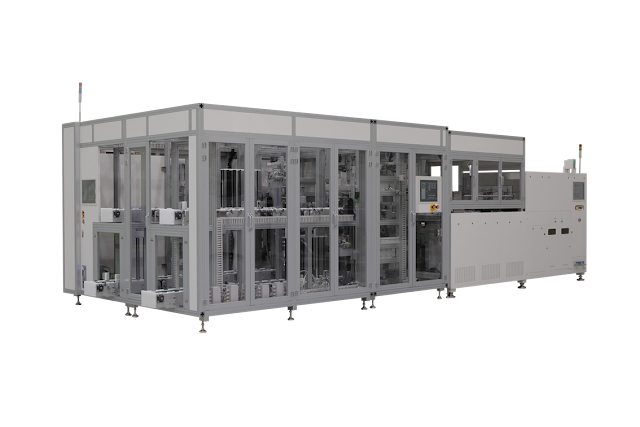SoLayTec today announced the continuing positive trend of incoming orders. Four new solar customers around the globe have ordered the Atomic Layer Deposition (ALD) equipment from SoLayTec. One of these customer is from Taiwan, and a mayor a step to open further opportunities for SoLayTec in this market. These shipments are scheduled to start within this quarter.
Depending
on the capacity levels that are needed SoLayTec offers three types of InPassion
ALD. Main difference is the number of deposition units modules added in such a
system. The basic three products offered are 4, 6 or 8 deposition units,
that respectively result into 2,500* wph, 3,600* wph or 4,800* wph. (www.solaytec.com)
Depending
on the capacity levels that are needed SoLayTec offers two types of
InPassion ALD. Main difference is the number of deposition units modules
added in such a system. The basic two products offered are 4, 6 or 8
deposition units, that respectively result into 2,500* wph, 3,600* wph
or 4,800* wph. - See more at:
http://www.solaytec.com/products/inpassion-ald#sthash.y20MGE3A.dpuf
“After several years of having InPassion ALD systems in mass production at multiple customers in China and Japan, SoLayTec is delighted to announce that in the last couple of weeks 3 orders were received”, according Roger Görtzen, co-founder of SoLayTec and manager marketing and sales.
Field Replaceable Unit (optional FRU) - If one of the deposition units is not working properly and can’t be fixed by the customer or SoLayTec service team, this module or FRU will be replaced by another FRU. In this way the tool will be running as fast as possible at 100% capacity again. In parallel this FRU will be send to a SoLayTec service station to be refurbished. (www.solaytec.com)
“These machines will be used for production of high efficient solar cell concepts, like p-type PERC, n-type IBC and bi-facial cells. In the past SoLayTec announced that spatial ALD results in a higher efficiency of about 0,2% for multi and mono PERC cells compared to PECVD AlOx. At one leading PV solar cell manufacturer we have measured for ALD Al2O3 a surface recombination velocity between 1- 5cm/sec compared to ≥ 30cm/sec on similar material for PECVD AlOx . This data confirms that the passivation quality of ALD Al2O3 is factor ≥ 6 higher compared to PECVD AlOx. Recently, the c-Si wafer quality has been improved, and this results into better bulk material of the c-Si material. Consequently our customers request an excellent surface passivation which can be provided by ALD Al2O3 for their future cell concepts.” according Roger Görtzen.
“So far, our customers were located in China, Japan and Europe so we are very happy with our newest market entrance in Taiwan. Now we have finally achieved this important milestone and of course SoLayTec will focus on further expansion of its footprint in this country.” said Roger Görtzen.
For more information, please visit www.solaytec.com.
SoLayTec
SoLayTec is a spin-off company of the Dutch research organisation TNO and established in 2010. SoLayTec is part of the Amtech Group (Nasdaq ASYS). The company develops, delivers and services machines for atomic layer deposition (ALD) on solar cells worldwide. The SoLayTec ALD machines are designed for mass production in the solar market. In the field of solar cell ALD equipment, SoLayTec has a leading position.For more information, please visit www.solaytec.com.



%20(1).png)





